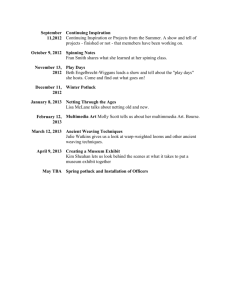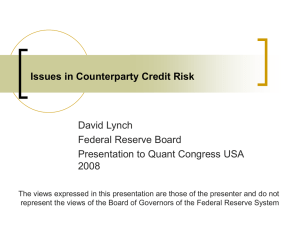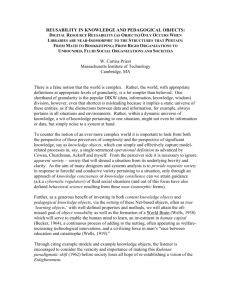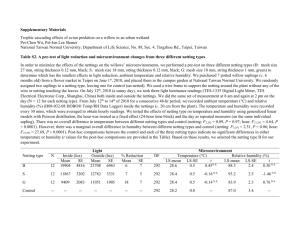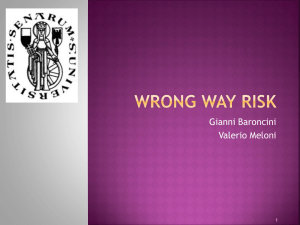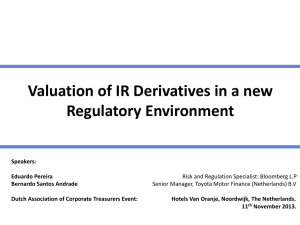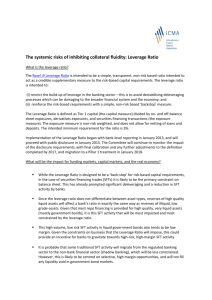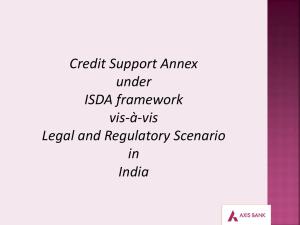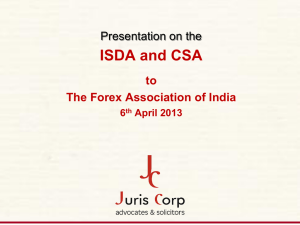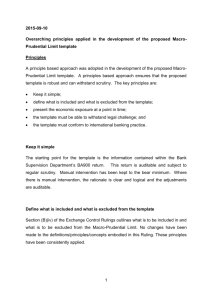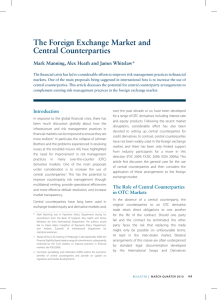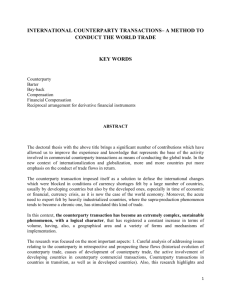XIV. COUNTERPARTY CREDIT RISK 1. Definitions For the
advertisement
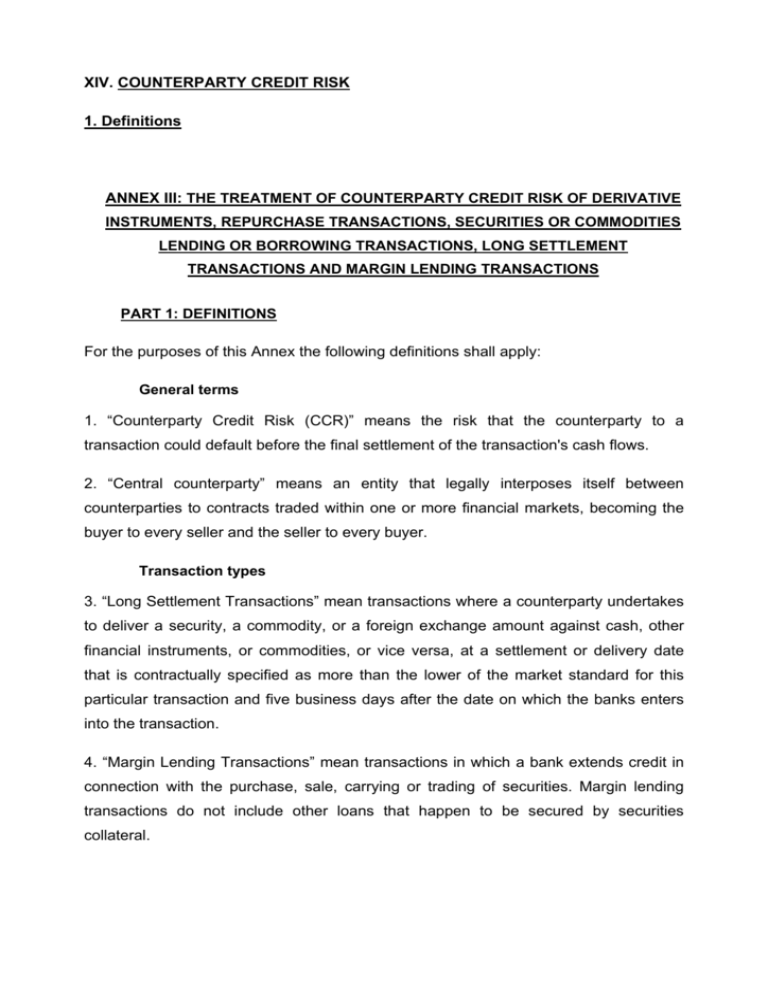
XIV. COUNTERPARTY CREDIT RISK 1. Definitions ANNEX III: THE TREATMENT OF COUNTERPARTY CREDIT RISK OF DERIVATIVE INSTRUMENTS, REPURCHASE TRANSACTIONS, SECURITIES OR COMMODITIES LENDING OR BORROWING TRANSACTIONS, LONG SETTLEMENT TRANSACTIONS AND MARGIN LENDING TRANSACTIONS PART 1: DEFINITIONS For the purposes of this Annex the following definitions shall apply: General terms 1. “Counterparty Credit Risk (CCR)” means the risk that the counterparty to a transaction could default before the final settlement of the transaction's cash flows. 2. “Central counterparty” means an entity that legally interposes itself between counterparties to contracts traded within one or more financial markets, becoming the buyer to every seller and the seller to every buyer. Transaction types 3. “Long Settlement Transactions” mean transactions where a counterparty undertakes to deliver a security, a commodity, or a foreign exchange amount against cash, other financial instruments, or commodities, or vice versa, at a settlement or delivery date that is contractually specified as more than the lower of the market standard for this particular transaction and five business days after the date on which the banks enters into the transaction. 4. “Margin Lending Transactions” mean transactions in which a bank extends credit in connection with the purchase, sale, carrying or trading of securities. Margin lending transactions do not include other loans that happen to be secured by securities collateral. Netting sets, hedging sets, and related terms 5. “Netting Set” means a group of transactions with a single counterparty that are subject to a legally enforceable bilateral netting arrangement and for which netting is recognised under Part 7 of this Annex and paragraphs 34 to 37 of Unit A. Each transaction that is not subject to a legally enforceable bilateral netting arrangement, which is recognised under Part 7 of this Annex, should be interpreted as its own netting set for the purpose of this Annex. 6. “Risk Position” means a risk number that is assigned to a transaction under the Standardised Method set out in Part 5 following a predetermined algorithm. 7. “Hedging Set” means a group of risk positions from the transactions within a single netting set for which only their balance is relevant for determining the exposure value under the Standardised Method set out in Part 5. 8. “Margin Agreement” means a contractual agreement or provisions of an agreement under which one counterparty shall supply collateral to a second counterparty when an exposure of that second counterparty to the first counterparty exceeds a specified level. 9. “Margin Threshold” means the largest amount of an exposure that remains outstanding until one party has the right to call for collateral. 10. “Margin Period of Risk” means the time period from the last exchange of collateral covering a netting set of transactions with a defaulting counterpart until that counterpart is closed out and the resulting market risk is re-hedged. 11. “Effective Maturity under the Internal Model Method, for a netting set with maturity greater than one year” means the ratio of the sum of expected exposure over the life of the transactions in the netting set discounted at the risk-free rate of return divided by the sum of expected exposure over one year in a netting set discounted at the risk-free rate. This effective maturity may be adjusted to reflect rollover risk by replacing expected exposure with effective expected exposure for forecasting horizons under one year. 12. “Cross-Product Netting” means the inclusion of transactions of different product categories within the same netting set pursuant to the Cross-Product Netting rules set out in this Annex. 13. For the purposes of Part 5, “Current Market Value (CMV)” refers to the net market value of the portfolio of transactions within the netting set with the counterparty. Both positive and negative market values are used in computing CMV. Distributions 14. “Distribution of Market Values” means the forecast of the probability distribution of net market values of transactions within a netting set for some future date (the forecasting horizon), given the realised market value of those transactions up to the present time. 15. “Distribution of Exposures” means the forecast of the probability distribution of market values that is generated by setting forecast instances of negative net market values equal to zero. 16. “Risk-Neutral Distribution” means a distribution of market values or exposures at a future time period where the distribution is calculated using market implied values such as implied volatilities. 17. “Actual Distribution” means a distribution of market values or exposures at a future time period where the distribution is calculated using historic or realised values such as volatilities calculated using past price or rate changes. Exposure measures and adjustments 18. “Current Exposure” means the larger of zero or the market value of a transaction or portfolio of transactions within a netting set with a counterparty that would be lost upon the default of the counterparty, assuming no recovery on the value of those transactions in bankruptcy. 19. “Peak Exposure” means a high percentile of the distribution of exposures at any particular future date before the maturity date of the longest transaction in the netting set. 20. “Expected Exposure (EE)” means the average of the distribution of exposures at any particular future date before the longest maturity transaction in the netting set matures. 21. “Effective Expected Exposure (Effective EE or EEE) at a specific date” means the maximum expected exposure that occurs at that date or any prior date. Alternatively, it may be defined for a specific date as the greater of the expected exposure at that date, or the effective exposure at the previous date. 22. “Expected Positive Exposure (EPE)” means the weighted average over time of expected exposures where the weights are the proportion that an individual expected exposure represents of the entire time interval. When calculating the minimum capital requirement, the average is taken over the first year or, if all the contracts within the netting set mature within less than one year, over the time period of the longest maturity contract in the netting set. 23. “Effective Expected Positive Exposure (Effective EPE)” means the weighted average over time of effective expected exposure over the first year, or, if all the contracts within the netting set mature within less than one year, over the time period of the longest maturity contract in the netting set, where the weights are the proportion that an individual expected exposure represents of the entire time interval. 24. “Credit Valuation Adjustment” means an adjustment to the mid-market valuation of the portfolio of transactions with a counterparty. This adjustment reflects the market value of the credit risk due to any failure to perform on contractual agreements with a counterparty. This adjustment may reflect the market value of the credit risk of the counterparty or the market value of the credit risk of both the bank and the counterparty. 25. “One-Sided Credit Valuation Adjustment” means a credit valuation adjustment that reflects the market value of the credit risk of the counterparty to the bank, but does not reflect the market value of the credit risk of the bank to the counterparty. CCR related risks 26. “Rollover Risk” means the amount by which expected positive exposure is understated when future transactions with a counterpart are expected to be conducted on an ongoing basis. The additional exposure generated by those future transactions is not included in calculation of EPE. 27. “General Wrong-Way Risk” arises when the PD of counterparties is positively correlated with general market risk factors. 28. “Specific Wrong-Way Risk” arises when the exposure to a particular counterparty is positively correlated with the PD of the counterparty due to the nature of the transactions with the counterparty. A bank shall be considered to be exposed to Specific Wrong-Way Risk if the future exposure to a specific counterparty is expected to be high when the counterparty's PD is also high.
